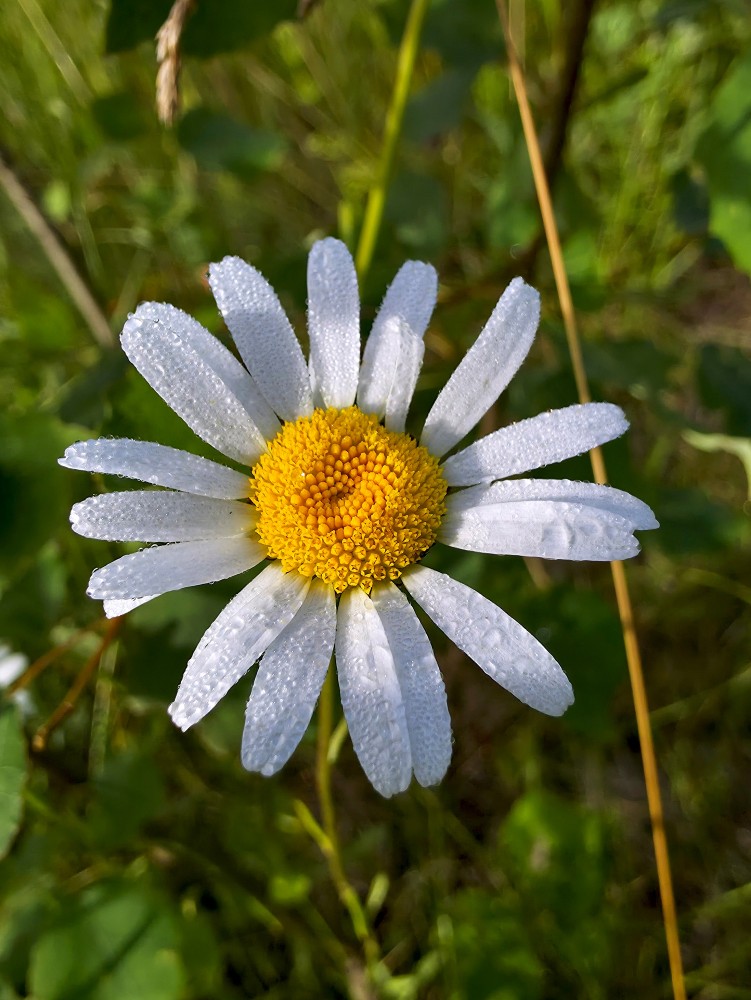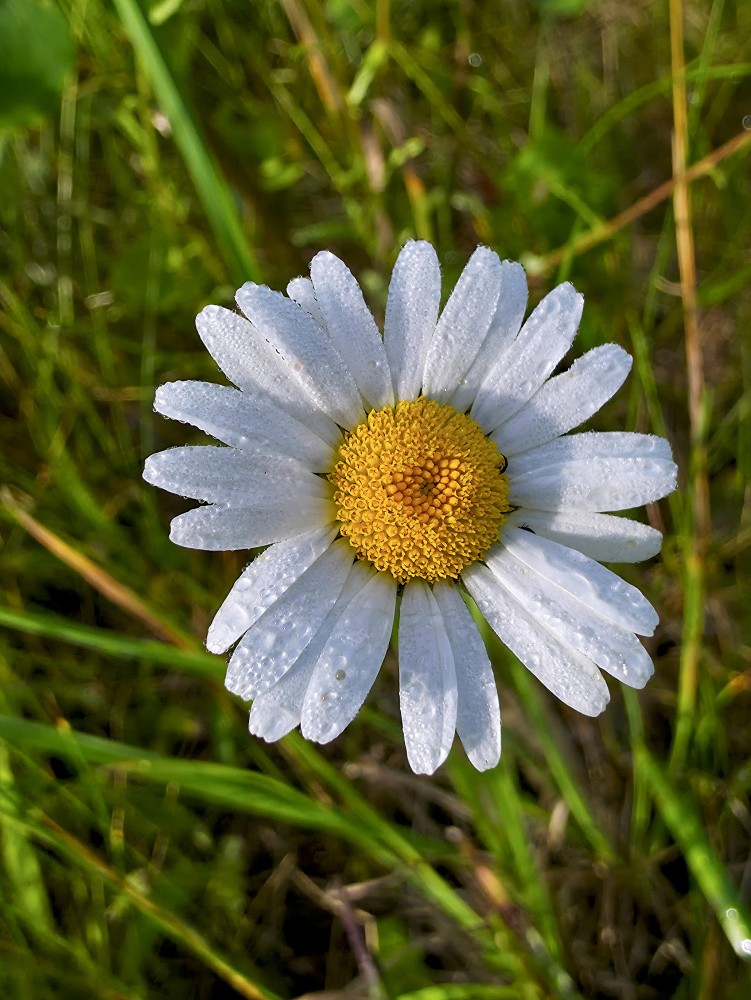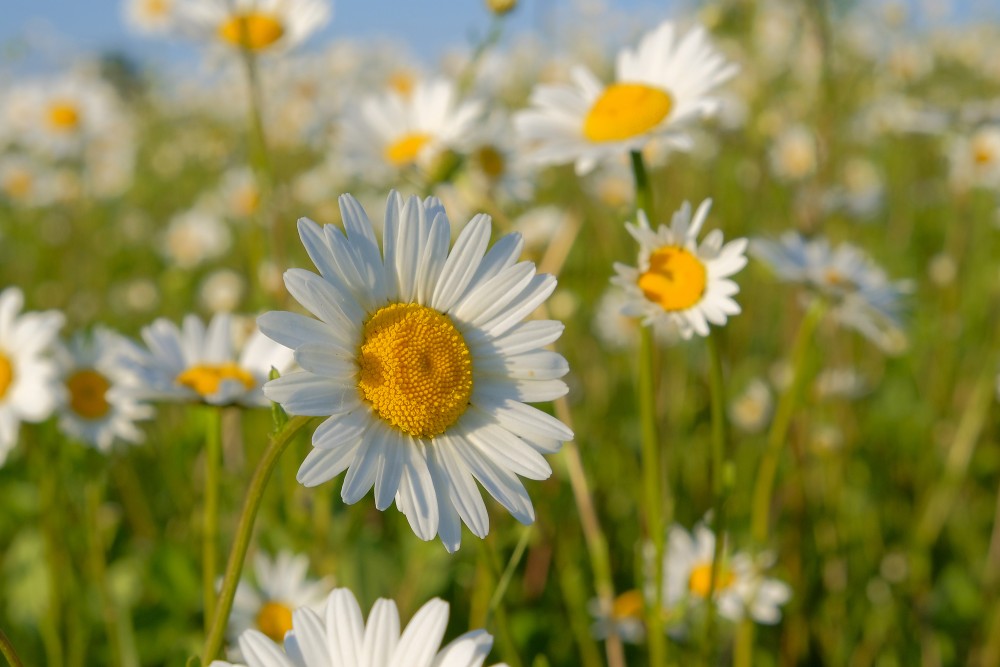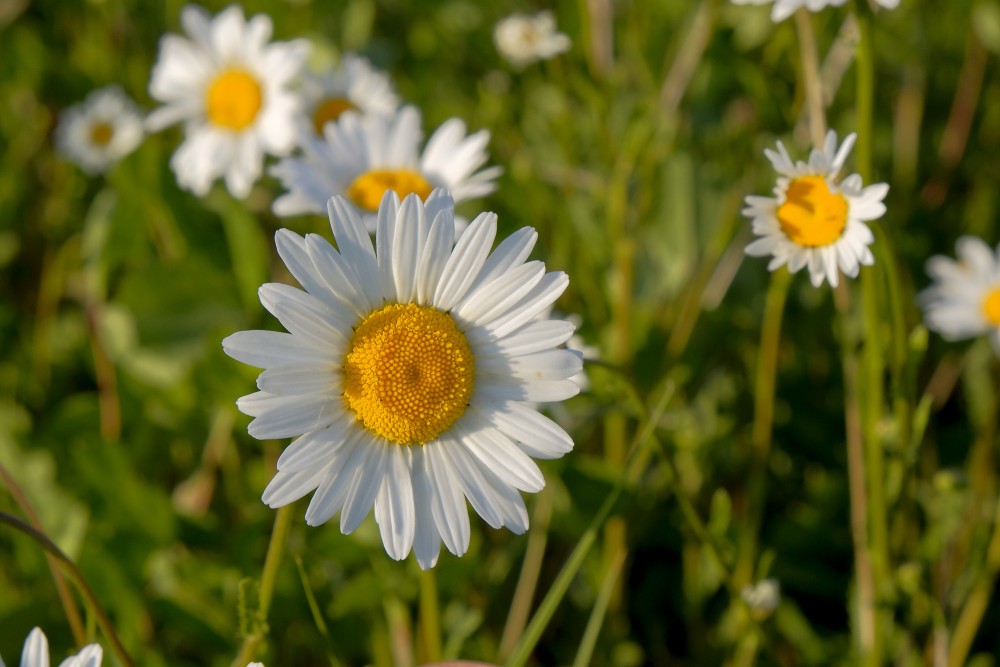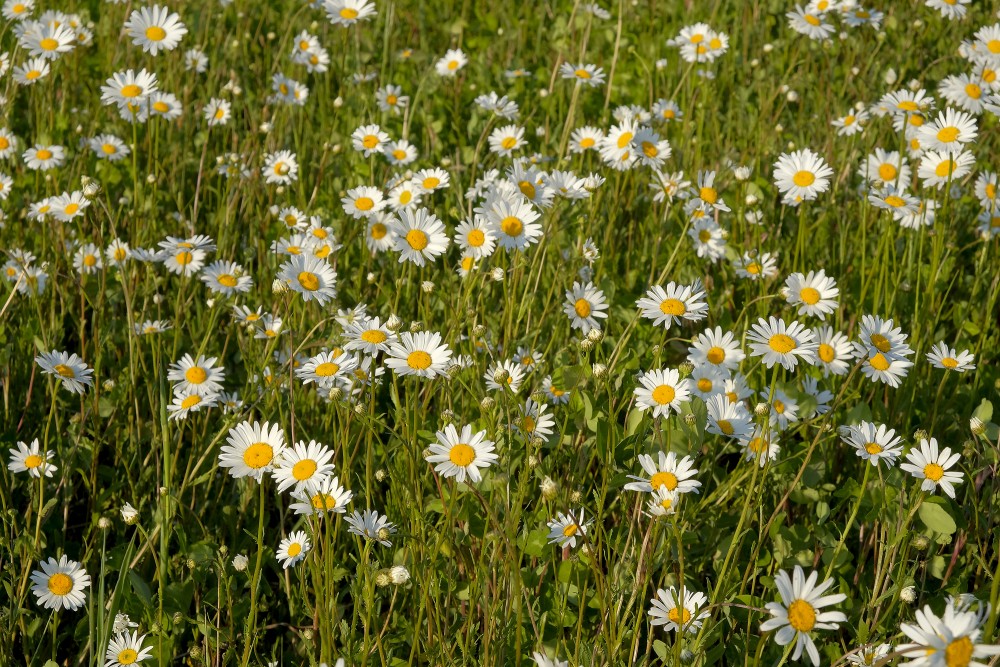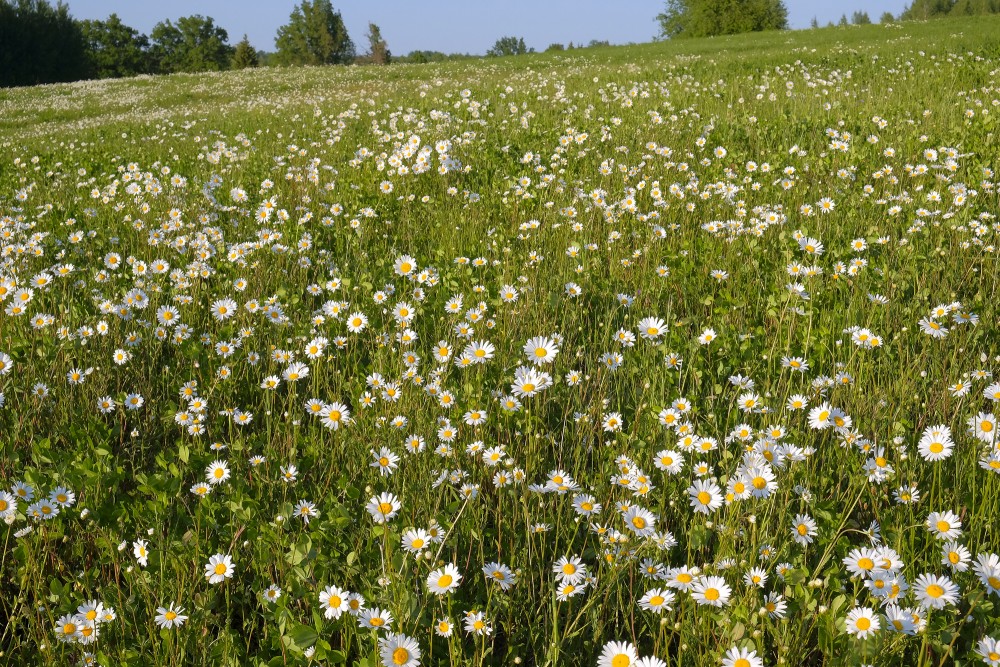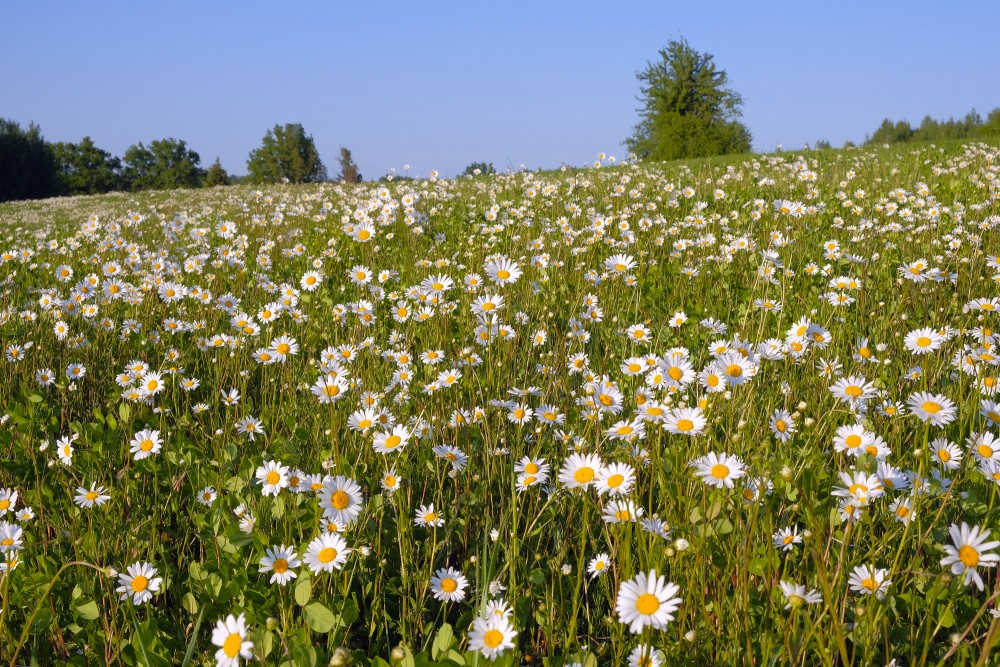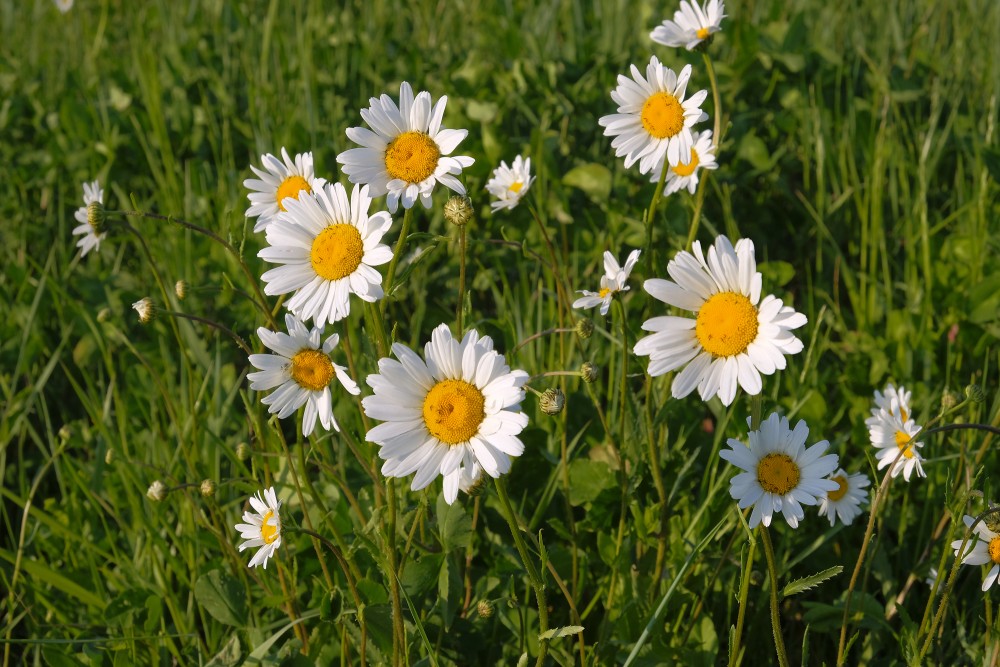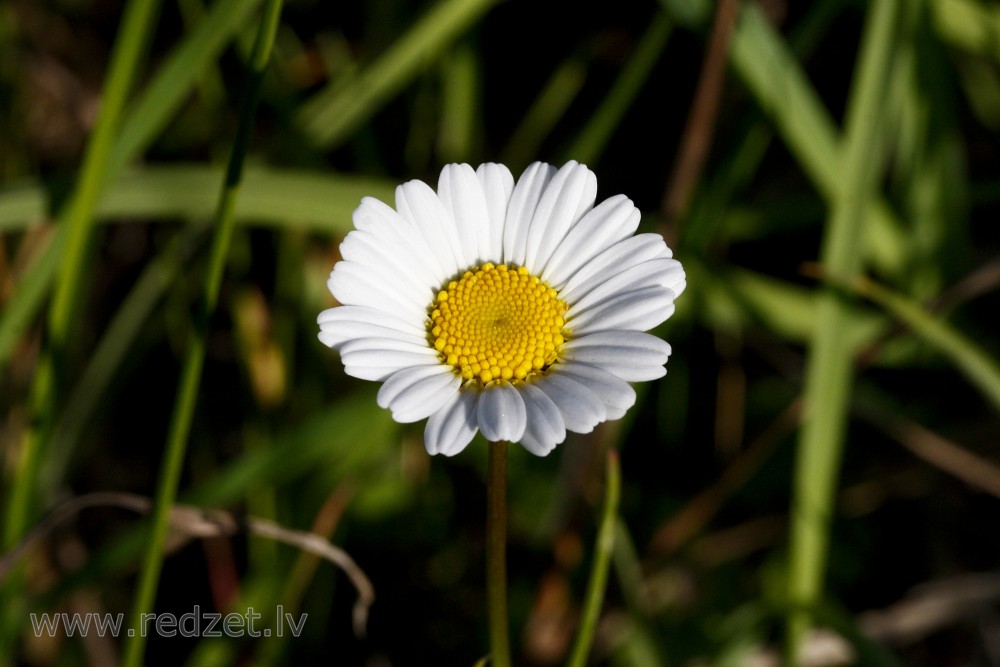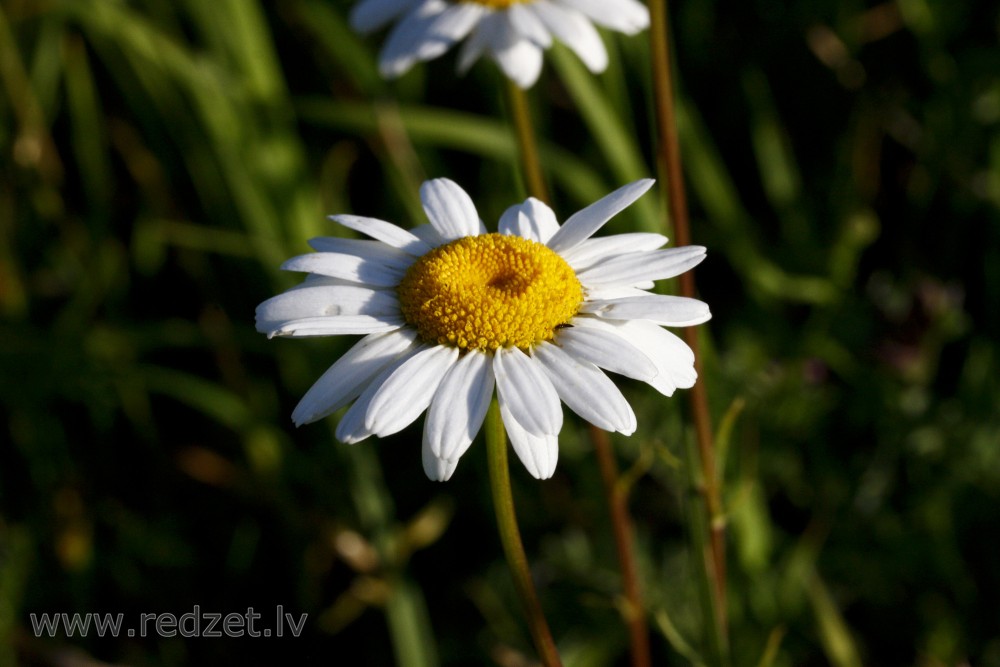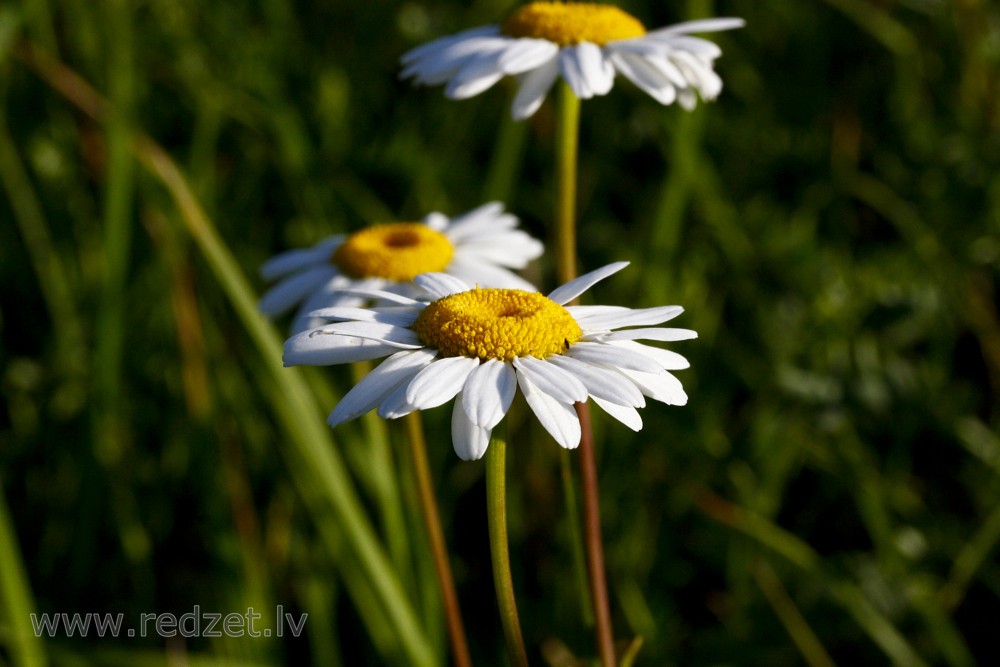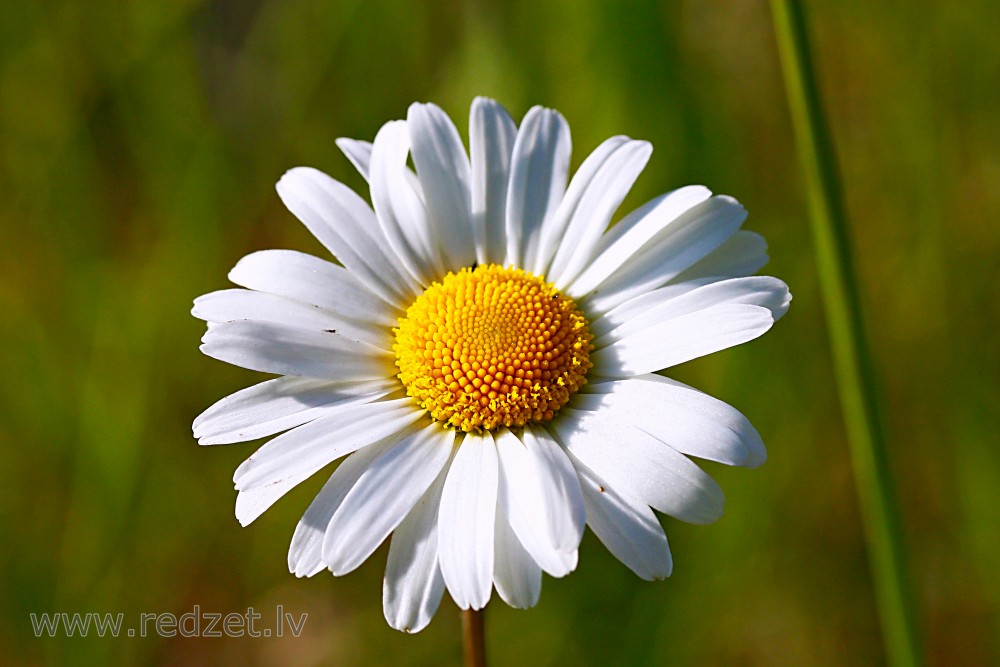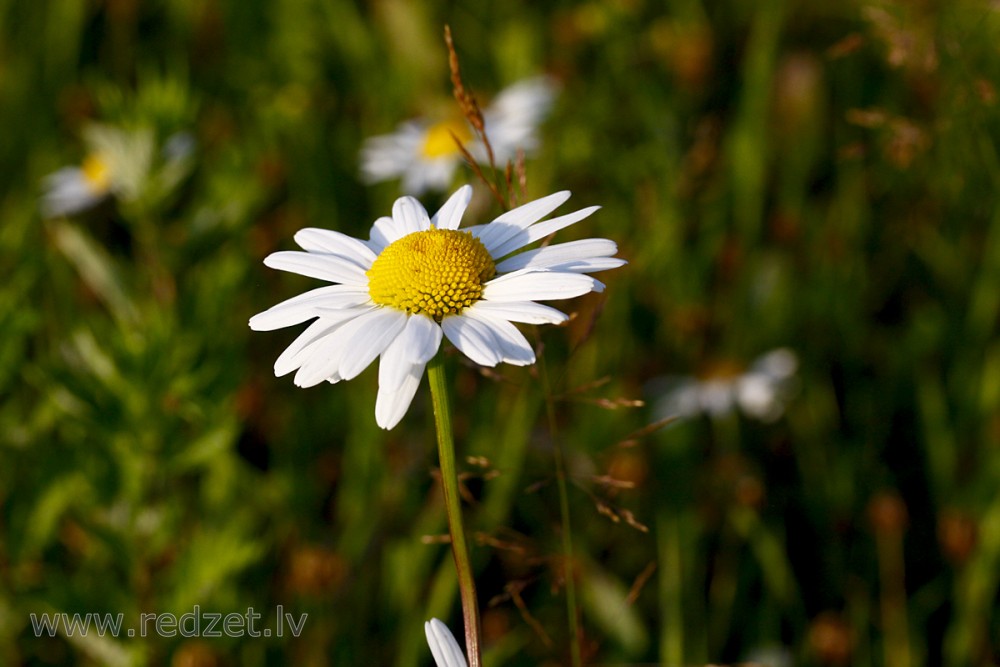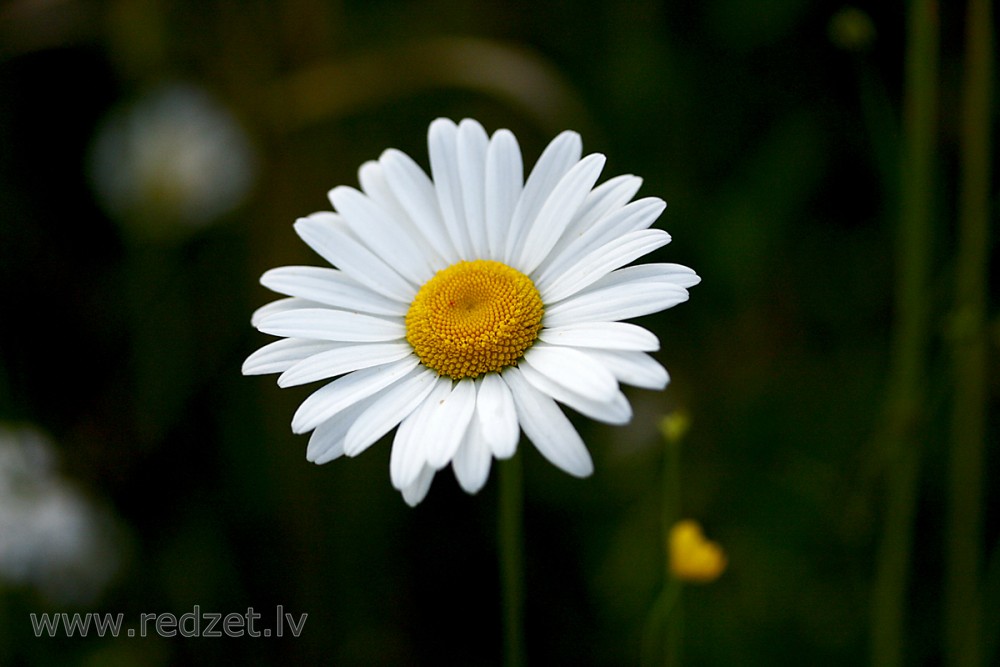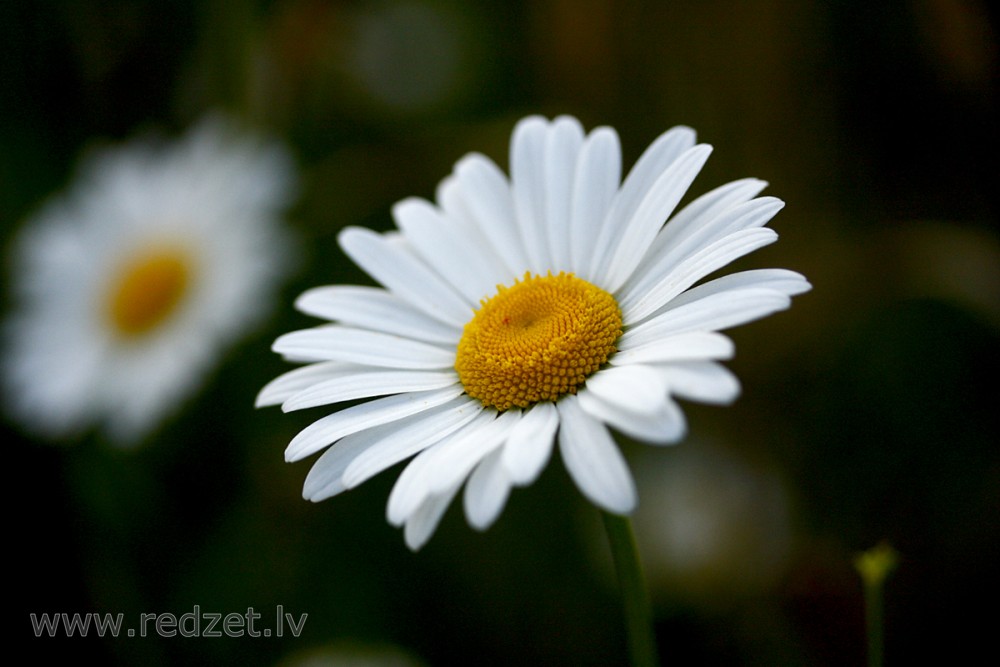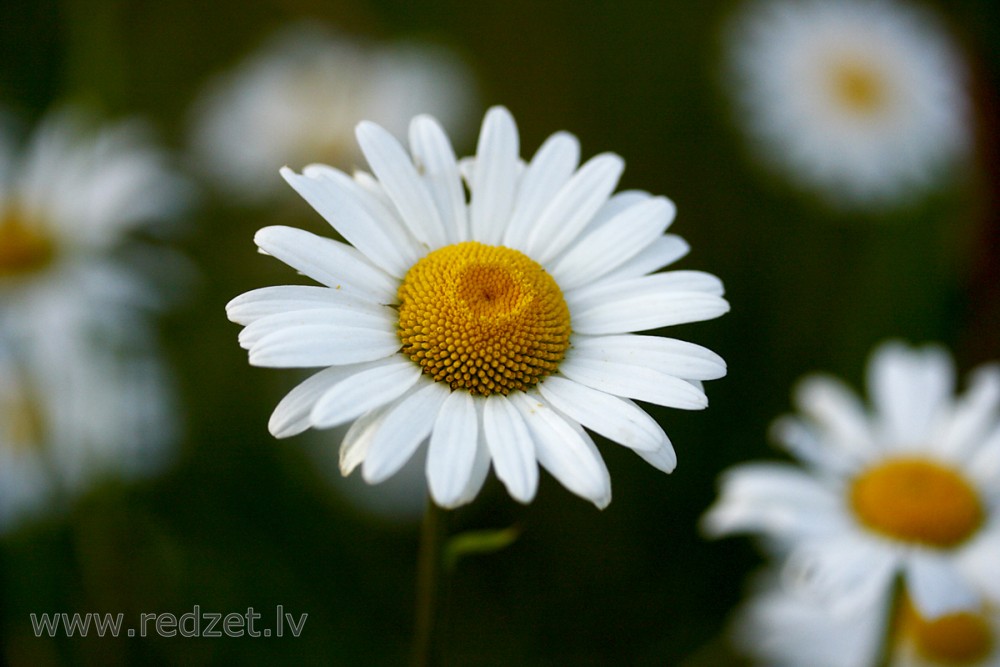Leucanthemum vulgare (Oxeye daisy)
Leucanthemum vulgare, commonly known as the ox-eye daisy, oxeye daisy, dog daisy and other common names, is a widespread flowering plant native to Europe and the temperate regions of Asia, and an introduced plant to North America, Australia and New Zealand.
| Leucanthemum vulgare | |
| Kingdom: | Plantae |
| Clade: | Angiosperms |
| Clade: | Eudicots |
| Clade: | Asterids |
| Order: | Asterales |
| Family: | Asteraceae |
| Genus: | Leucanthemum |
| Species: | L. vulgare |
Description
Leucanthemum vulgare is a perennial herb that grows to a height of 60 cm (20 in) or more and has a creeping underground rhizome. The lower parts of the stem are hairy, sometimes densely hairy but more or less glabrous in the upper parts. The largest leaves are at the base of the plant and are 4–15 cm (1.6–5.9 in) long, about 5 cm (2 in) wide and have a petiole. These leaves have up to 15 teeth, or lobes or both on the edges. The leaves decrease in size up the stem, the upper leaves up to 7.5 cm (3 in) long, lack a petiole and are deeply toothed.
The plant bears up to three "flowers" like those of a typical daisy. Each is a "head" or capitulum 2–6 cm (0.8–2 in) wide. Each head has between fifteen and forty white "petals" (ray florets) 10–20 cm (3.9–7.9 in) long surrounding the yellow disc florets. Below the head is an involucre of glabrous green bracts 7–10 mm (0.28–0.39 in) long with brownish edges. Flowering mostly occurs from late spring to early summer. The seed-like achenes are 1–3 mm (0.039–0.12 in) long and have ten "ribs" along their edges but lack a pappus.
Ox-eye daisy is similar to shasta daisy (Leucanthemum × superbum) which has larger flower-heads (5–12 cm (2–5 in) wide) and to stinking chamomile (Anthemis cotula which has smaller heads (1.5–3 cm (0.6–1 in) wide).
Taxonomy and naming
Leucanthemum vulgare was first formally described in 1778 by Jean-Baptiste Lamarck who published the description in Flore françoise. The name Leucanthemum is derived from the Ancient Greek words λευκός (leukós) meaning "white"[9]:856 and ἄνθος (ánthos) meaning "flower". It is also known by the common names ox-eye daisy, dog daisy, field daisy, Marguerite, moon daisy, moon-penny, poor-land penny, poverty daisy and white daisy.
Distribution and habitat
Ox-eye daisy is native to Europe, and to Turkey and Georgia in Western Asia. It is a typical grassland perennial wildflower, growing in a variety of plant communities including meadows and fields, under scrub and open-canopy forests, and in disturbed areas. The species is widely naturalised in many parts of the world and is considered to be an invasive species in more than forty countries. It grows in temperate regions where average annual rainfall exceeds 750 mm (30 in), and often where soils are heavy and damp. It is often a weed of degraded pastures and roadsides.
Ecology
Ox-eye daisy spreads by seeds and by shallow, creeping rhizomes. A mature plant can produce up to 26,000 seeds that are spread by animals, vehicles, water and contaminated agricultural produce, and some seeds remain viable for up to nearly forty years. It is not palatable to cattle and reduces the amount of quality pasture available for grazing. In native landscapes such as the Kosciuszko National Park in Australia, dense infestation can exclude native plants, causing soil erosion and loss of soil organic matter.
This plant was top-ranked for pollen production per floral unit sampled at the level of the entire capitulum, with a value of 15.9 ± 2μl, in a UK study of meadow flowers.
Status as an invasive species
Leucanthemum vulgare is one of the most widespread weeds in the Anthemideae. It became an introduced species via gardens into natural areas in parts of Canada, the United States, Australia, and New Zealand. In some habitats it forms dense colonies displacing native plants and modifying existing communities.
Ox-eye daisy commonly invades lawns, and is difficult to control or eradicate, since a new plant can regenerate from rhizome fragments and is a problem in pastures where beef and dairy cattle graze, as usually they will not eat it, thus enabling it to spread. It has been shown to carry several crop diseases.
This species has been declared an environmental weed in New South Wales and Victoria. In New South Wales it grows from Glen Innes on the Northern Tablelands to Bombala in the far southeast of the state, and there are significant populations in the Kosciuszko National Park where is has invaded subalpine grassland, snowgum (Eucalyptus pauciflora) woodland and wetlands. In Victoria it is a prohibited species and must be eradicated or controlled.
en.wikipedia.org
